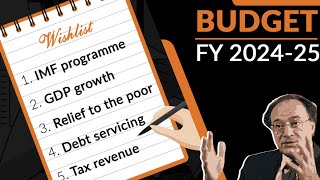The private sector credit off-take was more than double in the nine-month ended March 31, boosted by an increase in agriculture, auto, engineering, and textile production, as compared to same period a year ago.
The commercial bank loans to industries in the country rose to Rs 233.6 billion from July - March, from Rs 83.2 billion in the year earlier period, according to the figures posted on the website of the State Bank of Pakistan.
Sakib Sherani at ABN Amro Bank, said the disbursement of the bank credit to the private sector showed no sign of abating. As a result, the stock of bank borrowing undertaken by the private sector has reached 28 percent of GDP, yet another historic peak.
Higher cotton prices, greater agricultural credit disbursement by commercial banks, the increased pace of consumer lending (including home mortgages, auto loans, financing for durable goods purchases and personal loans), and greater credit flow to SMEs appear to account for a significant portion of the total credit offtake by the private sector.
"The $70 billion Pakistan's economy may expand between 5.5 percent to 5.8 percent in the year ending June 30", said in a quarterly report of central bank released on March 30.
The government set a target of 5.3 percent at the start of the year from 5.1 percent a year ago.
Textile companies have done a bulk of borrowings to increase their production and meet the export demand, said an analyst from a leading brokerage house.
In 2002, Pakistan won preferential market access for its textiles in return for support of the US-led war in Afghanistan.
The European Union and Turkey raised their import quotas by as much as 25 percent in January last year, while the US lowered barriers to Pakistani goods.
"Since 2001, over $2 billion of textile machinery has been imported to improve quality of their products", he said.
During eight months to February 28, production in the countries rose 15.1 percent as compared to 6.3 percent in the year earlier period. The production of televisions, refrigerators and vehicles has risen, and investments have been made in oil and gas sectors, the central bank said.
"Low interest rates helped textile and cement companies in paying off their expensive debts, cutting their financing costs", said an analyst, adding cheap loans provided by banks and other financial institutions boost sales of automobiles and other consumer goods.
The production in the large-scale manufacturing sector has accelerated sharply where electricity generation and production has spurted on the back of some of major new finds as a result of rise in exploration activity.
After hitting an air pocket in November 2003, exports have picked up steam once again, bouncing 10 percent in March 2004 as compared with the same period last year, while 12 percent as against February exports.
In terms of July-March 2003-04 growth which rose 13 percent in the corresponding period last year with the main contributors being cotton fabrics, knitwear, cotton yarn, cotton cloth, bedwear, leather garments, gloves and engineering goods.
BR100
8,052
Increased By
75.9 (0.95%)
BR30
25,581
Decreased By
-21.4 (-0.08%)
KSE100
76,707
Increased By
498.6 (0.65%)
KSE30
24,698
Increased By
260.2 (1.06%)


















Comments
Comments are closed.